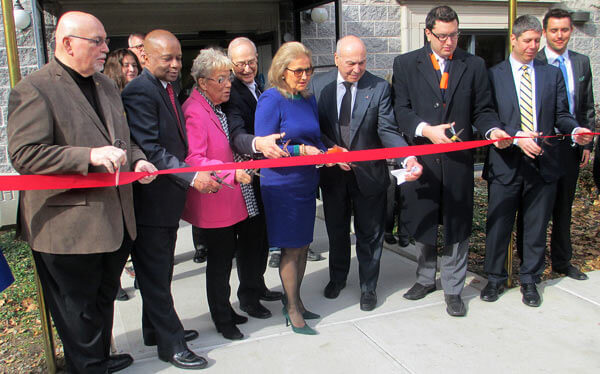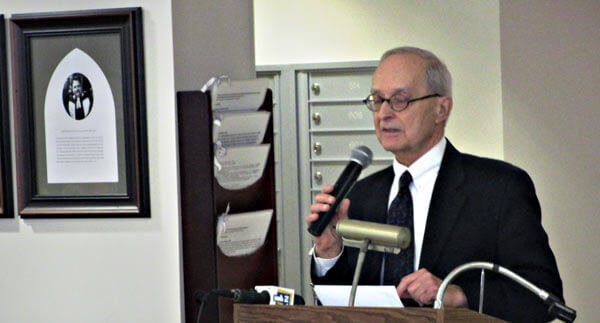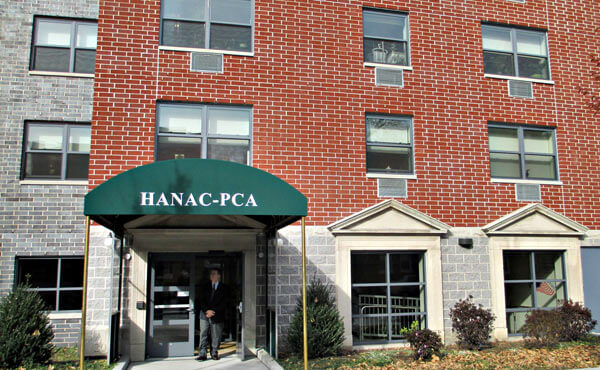By Bill Parry
Community members and elected officials gathered for a ribbon-cutting ceremony at Astoria’s newest affordable senior residence Friday.
The $24 million HANAC-PAC Senior Residence complex, at 31-34 33rd St., provides 66 units of housing. A total of 90 low-income senior citizens will pay 30 percent of their net income for the studios and one-bedroom apartments. The need is so great that 2,800 people applied.
“It’s a testament to the overwhelming need in the community and it will become more of a concern around the nation as record numbers of Americans retire,” said John Kaiteris, executive director of the Hellenic-American Neighborhood Action Committee, an Astoria-based nonprofit social services organization.
HANAC partnered with The Presbyterian Church of Astoria on the project.
William Bauer, a 64-year-old former U.S. Air Force mechanic and resident of the building, said, “It’s like winning the lottery. Now I can go to a movie and even go out to dinner. It makes all the difference in the world.”
Bauer added that living in Astoria was way beyond his means with the median price of a one-bedroom apartment renting for $1,975, according to Zumper, an online search company.
“Astoria is such a great place to live, it’s a dream come true,” Bauer said.
The bulk of the financing for the project came from the U.S. Department of Housing and Urban Development, but HANAC had to get creative along the way.
“It was a real challenge to fill the gaps,” said Kaiteris. “We needed nine different funding sources. The sequester didn’t help.”
He said the office of Borough President Helen Marshall closed the final gap with $1.5 million.
“To award funding, we have to make sure it’s a good project. This one was excellent,” Marshall said.
The complex replaces the Presbyterian Church of Astoria.
“As the congregation began to shrink, they could no longer afford repairs,” explained Kaiteris. “The disrepair was so bad there were pigeons roosting in the sanctuary.”
The decision was made to tear down the church and replace it with something that benefitted the community. Remnants from the church serve as decorations throughout the complex.
“When they demolished the church, they discovered a time capsule that was buried in the ’20s,” historian Kathleen Hulser said. “The contents are on display as are documents from the original church that was built in 1846.”
Reach reporter Bill Parry by e-mail at bparry@cnglocal.com or by phone at 718-260-4538.

































